Hashing out which games will officially be a part of EGM’s overall top five list every year is always a battle, but I’m not sure any year was quite the war that 2011 was. On one side, you had those that were certain that The Elder Scrolls V: Skyrim was the best game of the year. On the other, I led a band of rebels who refused to back down on the idea that Dark Souls deserved that top spot. Sure, Skyrim’s vast open world might have made it the bigger experience, but—at least in my mind—it sure wasn’t the better one.
And now, 11 years later, here I am reviewing Elden Ring—the Skyrim of Souls games.
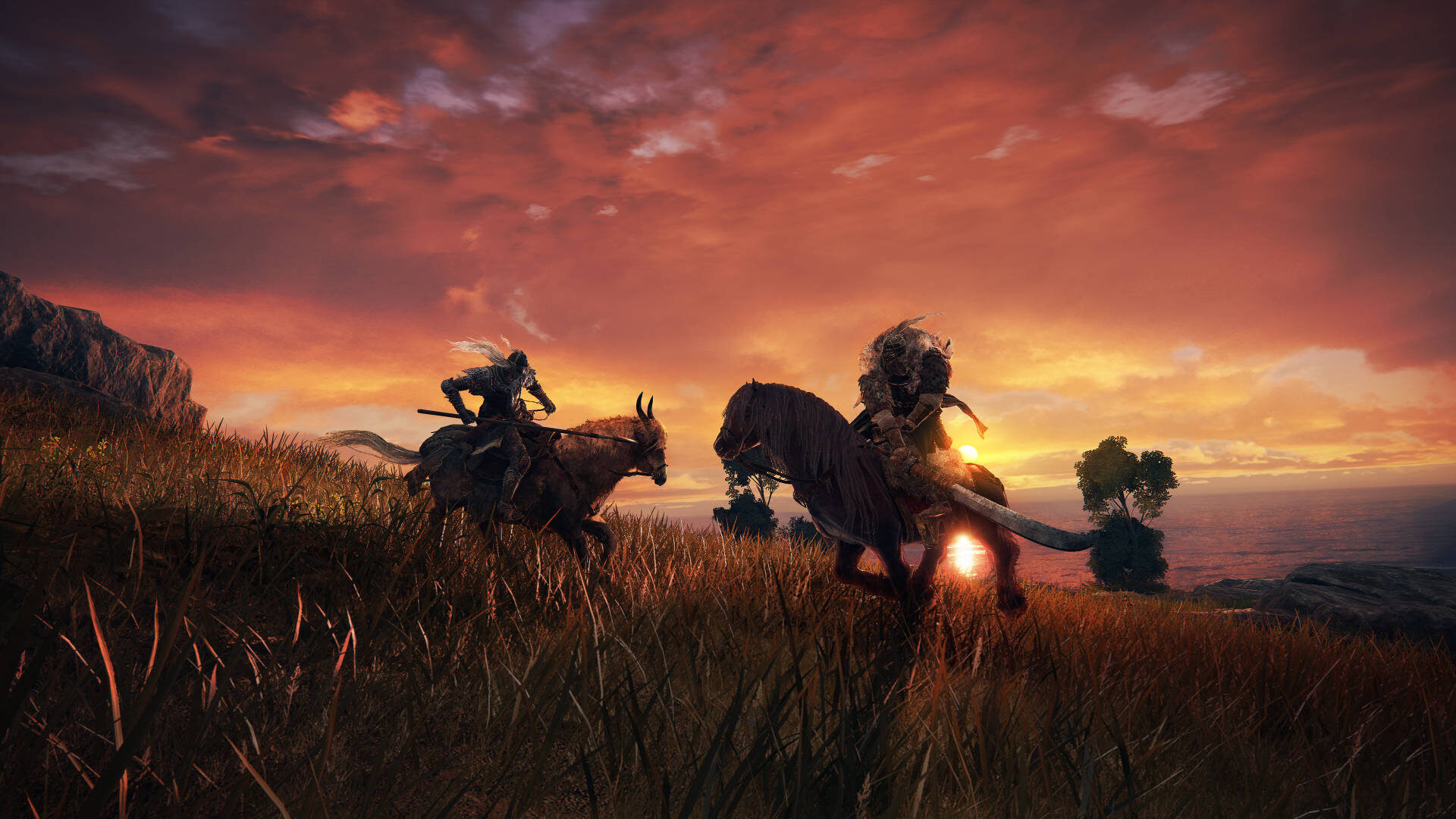
Well, “reviewing” isn’t quite the right word at this point, because this won’t be a full review just yet. As I’m writing these words, I’ve had my console copy of Elden Ring for just around five full days, nowhere near enough time to come close to beating the game. I’ve played enough Souls to say that the 35-or-so hours I’ve spent in the Lands Between are probably a good indicator of what awaits during the rest of my adventure, but that still wouldn’t make it right to just slap a score onto this and call it a day.
Especially because there’s one little problem with that rationale: Elden Ring isn’t a Souls game.
Now, before I explain that statement, I don’t want you to misunderstand: Elden Ring absolutely shares plenty of DNA with its Souls siblings, the most important of which is its combat. If you’ve become a fan of From’s brainy yet brutal battles, then you’re going to love what awaits here. The advancements between what we’ve had before and what we get in Elden Ring aren’t always dramatic, but they are appreciated. One of the biggest new features in my mind are Guard Counters, where you can instantly counterattack after blocking an enemy’s attack. Parries have always been an important part of the Souls series, but they’ve also been incredibly hard to pull off for some players. While Guard Counters certainly aren’t as powerful as parries—and they can get you in trouble if you rely too heavily on them—they do open up a lot of enemies for a riposte, and give a wider array of players the chance to feel cool.
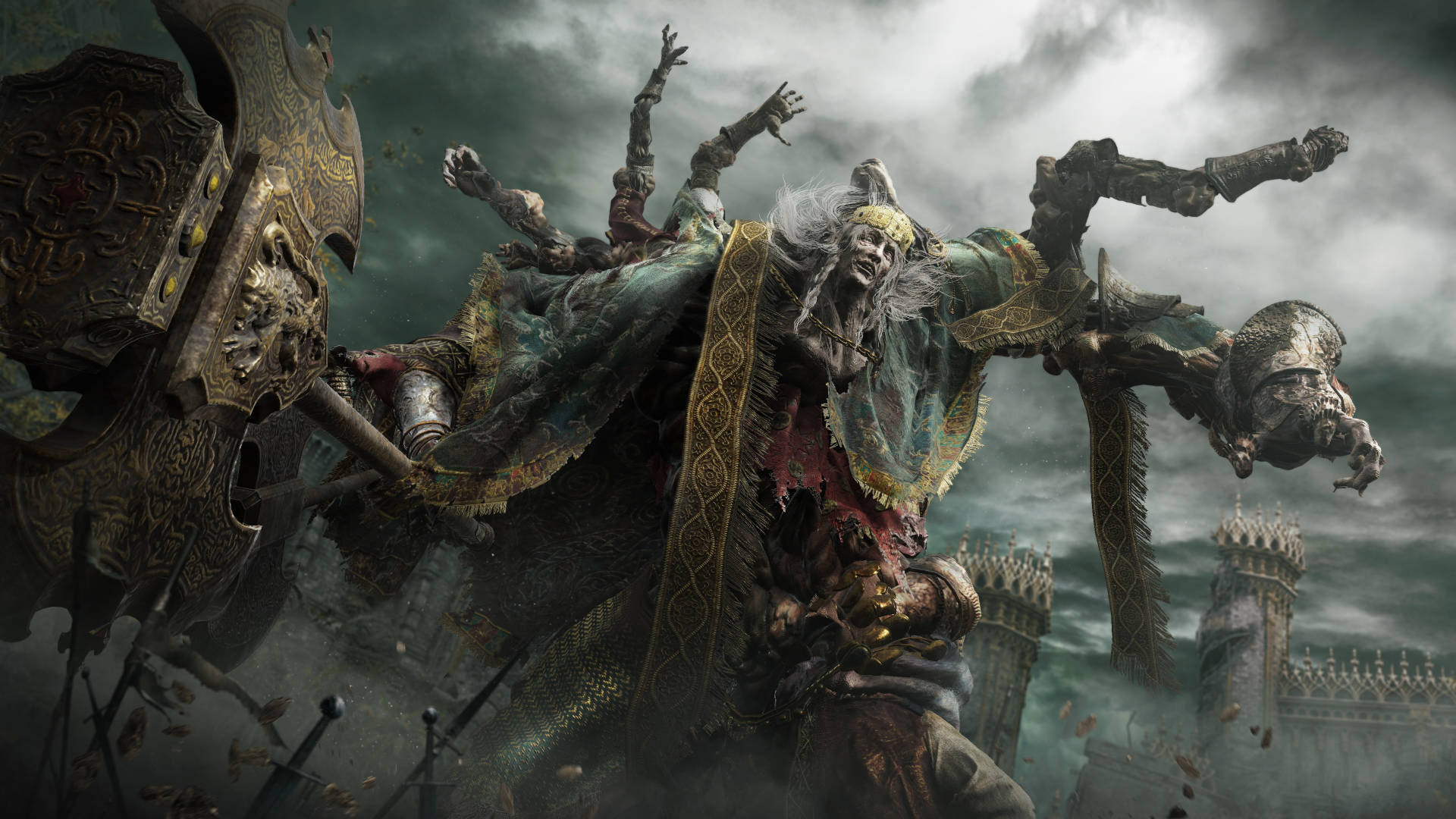
Another addition that I’m loving is the Spirit Calling Bell, an item that lets you summon the spirit of fallen enemies to aid you in battle. While the Souls series has long offered the ability to summon other players or certain NPCs into your game, summoning spirits is both more flexible, as it’s available anywhere where the ability is allowed (I know that’s vague, but it’s also kinda vague in-game too), and at your own pace, as you don’t have to worry about guest players getting bored and going home. Much like I was saying with Guard Counters, spirits aren’t nearly as powerful as the real thing, but they’re a welcome option to give the game flexibility. Flexibility is also the name of the game with the new crafting system, which lets you use materials you’ve found across the Lands Between to make items instead of always having to buy them. It seemed like such a strange inclusion to me at first, but it genuinely is nice to have a means through which you can have the items you need while also saving your runes (aka souls) for more important uses—even if getting those items for only the cost of your time does feel a bit like cheating. An endless amount of free arrows? In my Souls game?
Also, if you thought things went crazy in Dark Souls III with the introduction of the Ashen Estus Flask, Elden Ring now gives us a third flask, the Flask of Wondrous Physick. Along your journey, you’ll find various crystalized tears, each of which offers a certain buff (like gradual HP recovery, stamina boosts, etc.). You can mix any two buffs together in the Wondrous Physick, which then becomes usable and refillable like your other flasks. Even with sorceries and incantations and items and trinkets and plenty of other options for buffs, the Flask of Wondrous Physick is a nice additional option thanks to that customizability. Speaking of Dark Souls III, Weapon Arts make a return, but this time they’re found separately from weapons. By going to a blacksmith, you can embed those arts—now known as Ashes of War—onto any weapon you own, so long as that weapon type is supported. I haven’t messed around with the Ashes of War as much as I have the Wondrous Physick, but both options point to one of the overarching themes that seems to run all throughout the game: giving you a lot more choice in how you play.
And it’s choice that sits at the heart of what sets Elden Ring far apart from the rest of the Souls series.
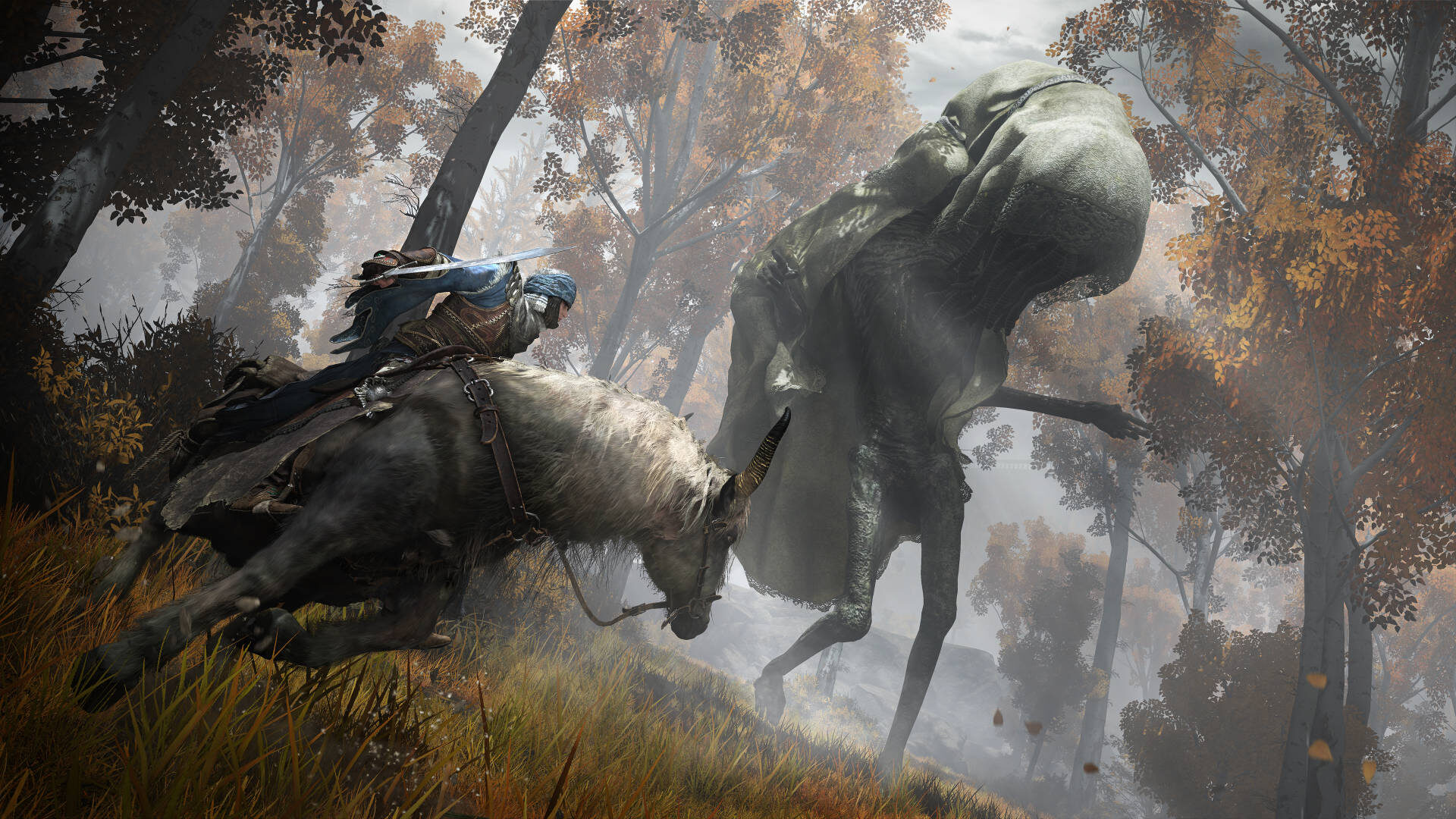
When Dark Souls came as a successor to Demon’s Souls, the progression from one to the other made perfect sense. You could feel FromSoftware playing with intricately designed world areas in the first game, but it wouldn’t be until the second when those ideas would come together in one interconnected, cohesive world. Other elements—like the core combat system, death penalties, overall difficulty, NPC interactions, storytelling style, boss design, item scarcity, and the general pacing of the journey from beginning to end—would all definitely see evolution, but rarely revolution. Even in From’s two big side projects, Bloodborne and Sekiro: Shadows Die Twice, the legacy of the Souls series could still be felt. It was never that the men and women of FromSoftware were lazy or uncreative. They’d just hit on a winning formula, and fans were always happy to have more.
Elden Ring doesn’t feel like more to me. It has many of those same elements, like combat, bosses, NPCs, and general atmosphere, but the areas in which it differs makes this game, and From’s other recent releases, feel miles apart. My head knows that classifying Elden Ring as a Souls game really isn’t wrong, but my heart can see this as nothing but a new, separate entity that stands on its own. By far the biggest factor in that is the open world, which is a seismic shift not just on a direct in-game physical level, but also a mental and emotional one for the player. This isn’t just Dark Souls but bigger—it’s a complete rethink in how to approach all of those encounters we’ve spent the last 10-plus years encountering.
If the previous games were a 2,000 piece Lego set, with every piece dedicated to building one elaborate and detailed structure, Elden Ring is those same pieces spread out across a table to craft a variety of buildings. Every moment of Dark Souls, or Bloodborne, or Sekiro was purposeful. Every square inch of the terrain felt planned, every enemy placement carefully considered, every action intended. Hidetaka Miyazaki and his team had a pretty good idea of what you’d be doing at any given moment, even if you yourself didn’t know. There was very little wasted space, few meaningless inclusions, and a sense of pacing and progression that always pushed you as a player forward. In contrast, Elden Ring is big. It’s wasteful. It’s directionless. It’s confusing. It’s cumbersome. It’s even, at times, boring.
And I’ve loved every minute of it.
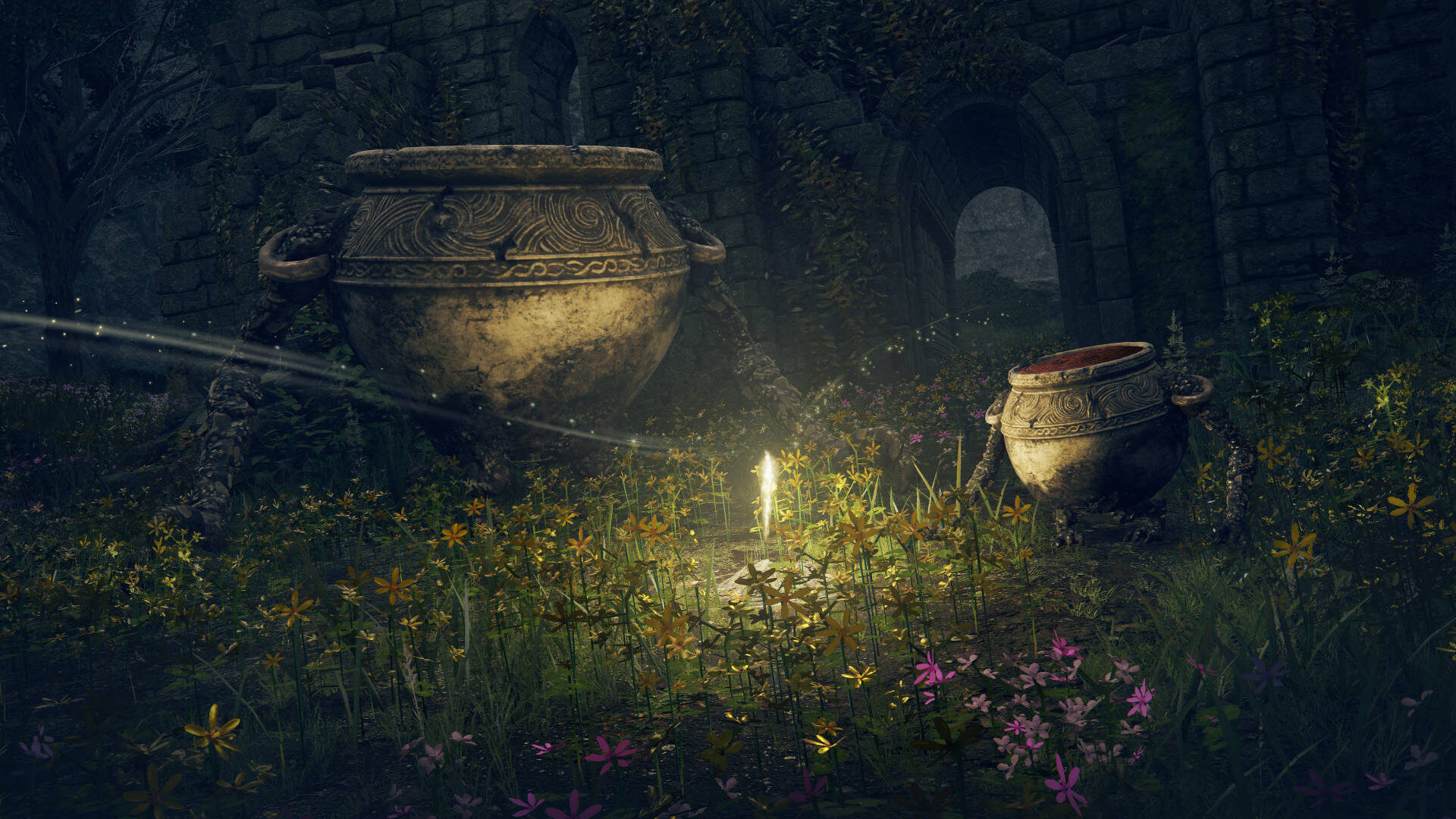
Elden Ring is going to be incredibly divisive amongst Souls fans. Some are going to absolutely hate it, or at least remain constantly annoyed by it, for those reasons and more. While examples of that level of meticulous FromSoftware design definitely still show up here, they’ll be too few and far between for many. For me, though, I never knew how much I wanted or needed a game like this until now. I still love everything done with the Souls series over the years, and I absolutely do not want those types of games to go away. But I’m also ready to get a break from that style of game design while keeping the aspects that can and do work in other types of games. This is the good parts of open world games mixed with the steller parts of Souls, and man is that a potent concoction.
As someone who’s long loved exploration in games simply for the sake of exploration, riding my spectral steed Torrent around the Lands Between has been so exhilarating. Everywhere I’ve gone, there’s been something interesting to see—even if there hasn’t been something interesting to do there. While Elden Ring can be even more cryptic in letting you know what you should be doing or where you should be going next, I’ve savored that freedom from being stuck on any given path. Typically in Souls games, if I’m stuck on a particularly infuriating boss, my choices are either to keep banging my head against that wall, or scrounge around for some other task I could be completing instead. When I got stuck on Elden Ring’s first major boss, Margit the Fell Omen, I left and didn’t return for hours. There were so many other things available for me to do, from fighting other bosses, to clearing out caves, to farming materials, to simply filling in more of my map. I’ve yet to feel like I have to do something specific at any given point, whether I want to or not. We get the challenge, the lore, and the creativity of Souls games, with the freedom to experience all of them when we’re ready to. And I love it. I love it.
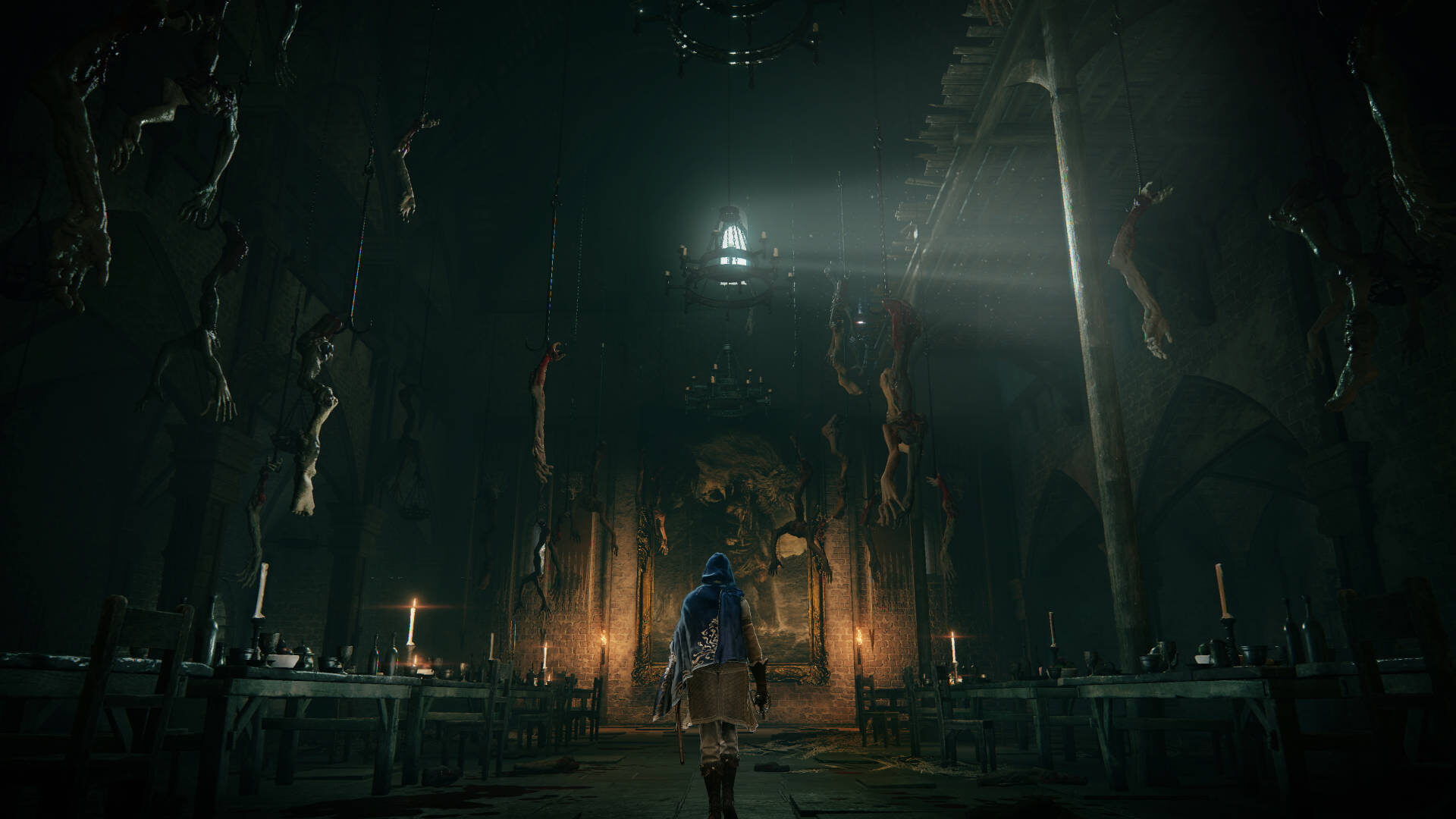
I don’t love everything, though, even when playing with the patch that Bandai Namco recommended we be on when doing our reviews. I’ve been going back and forth between playing on the 1080p monitor at my desk and our living room 4K TV, and even when at lower resolution and running in performance mode, Elden Ring still can’t maintain a steady 60 FPS. It’s FromSoftware, right? Framerate and frame pacing are always going to be some of the studio’s weaknesses. But, maybe at this point, they shouldn’t be.
There’s also elements that I simply don’t understand, like why I can’t always use my map even when not in a fight, and why I can’t always summon spirits even after activating the summoning idols. There are some parts of FromSoftware’s obsession with obscurity that I still appreciate, but others that I’ve long grown tired of. If I’m trying to use some basic game function, and I can’t, tell me why. Don’t just have my character shrug, and that’s it.
Any gripes I have at this point, though, are very minor in the grand scheme of things. Every time I think I might be growing tired of FromSoftware’s modern-era releases, the studio does something to rekindle my interest again—and Elden Ring has me feeling like the Bed of Chaos. Given my current knowledge of and expectations for what still lies ahead, I’ve probably got at least another 40 hours until I see the end credits. Could something happen in that time to make me change my feelings on the game? Absolutely. For now, though, I will be shocked if Elden Ring does not end up being one of my favorite games of the year—if not my #1 spot, just like Dark Souls once was.
Update: March 11, 2022
When I was writing the first half of this review, my plan was to come back once I had fully finished Elden Ring to give some final thoughts and slap on a score.
Now, as I’ve crossed the 100-hour mark in the game, those plans have changed. To be fair, I’m not all that far from being able to beat Elden Ring. I’ve got a good handle on where to go and what to do to finish up those final required tasks and bosses. I’ve been to all of the map’s late-game areas. The end credits haven’t rolled yet, but I can see them queuing up over the horizon.
So why not just beat the game before finishing this review?
Two reasons, really. The first is that I don’t think I have to in order to properly judge Elden Ring. While that goes against our policy here at EGM to always make an honest attempt to beat any game we’re reviewing, I can unequivocally tell you that there is nothing at this point that is going to change my mind on FromSoftware’s latest release. Back when I was still only 30 hours in, I gave consideration to the idea that something could happen past that point to make me like the game less. With every hour that’s gone by, however, my appreciation for and love of what Hidetaka Miyazaki and his team have done here has only grown. Elden Ring is the culmination of everything FromSoftware has been building toward since the release of Demon’s Souls. While I still argue it isn’t technically a Souls game, it is the Souls experience in its most refined, enhanced, and approachable state. I still cannot bring myself to say that I like Elden Ring more than Dark Souls—because that game just affected me so deeply at the time—but it is clearly the best game the studio has ever produced. (Sorry, The Adventures of Cookies and Cream.)
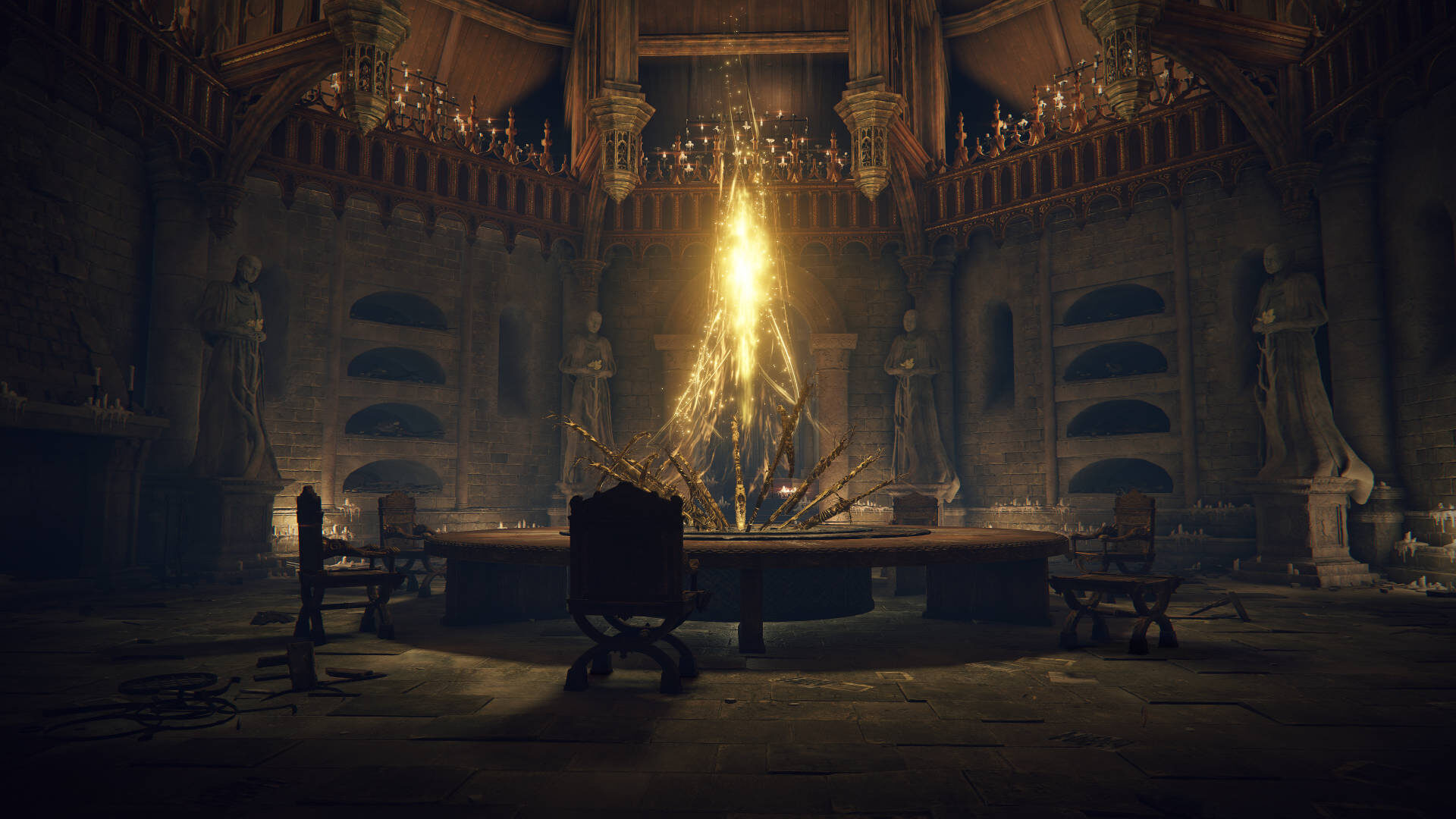
Just as Dark Souls once changed how I saw other video games, so too does Elden Ring. I dread playing an open-world game from another company after this, at least not for a while. Exploring the Lands Between—devoid of any hard-set goals, a map crowded with icons, mundane quests from NPCs, or often even any idea where I might end up—was always such a joy. No matter where I went, there was something worth seeing, and nothing that I found ever felt like it existed just so I’d have something to do or so that area wouldn’t look so barren. I honestly never expected FromSoftware could expand its style of world design out to the size of an actual world, but they did, to a degree that I can’t believe this game didn’t take years longer to develop. Every time I thought I’d hit the edges of the map, it grew in size, and no matter where I went, I discovered areas that felt rich in detail, beautiful in aesthetics, and alive with their own enemy types and unique landmarks. Elden Ring is definitely not the most visually impressive game you’ll see on a technical level, but few other releases can match it in terms of its artistry, complexity, or meticulous design.
Elden Ring is also just so utterly enjoyable when it comes to its gameplay. Taking the carefully crafted enemy encounters and slower, more thoughtful combat of the Souls games and moving it all to wide-open fields and less-cramped locations also shouldn’t have worked as well as it does. Not only does it work, but all of those moments of battle now feel even better. It’s the smaller things, like jump attacks actually being useful, or shields being far more powerful for those who love defending. It’s horseback combat while riding Torrent, which becomes an important tactic for certain fights. It’s the Ashes of War, which offer an impressive amount of depth for both adding new skills to your favorite weapon or changing their elemental affinity. It’s in how, in a shocking twist, stealth has become a legitimate strategy option, and that I don’t hate that fact. Or it’s the selection of spells and incantations that feel so much deeper now, which has been especially welcome to me as someone who loves Faith-based builds.
None of my opinions on those elements will change at this point—nor will my thoughts on Elden Ring’s weaknesses. Even though I’ve long stopped caring about the game’s framerate, it remains frustrating that FromSoftware continues to struggle with game performance, especially on the newer consoles. (I know PC players have had some bigger issues, and that there have been specific problems on both Xbox and PlayStation, but I’ve personally experienced none of what others have reported.) Speaking of new-gen hardware, load times can get annoying even when running on SSD, and environmental details–especially grass—often pop into view far later than they should. There are a few areas of the world where asset reuse is especially noticeable (such as the catacombs), and some of the impact of bosses can be lost when you first stumble across and defeat their clones before meeting the real deals. There is an unforgivable lack of spider women, and a surprising shortage of spiders period for a FromSoftware game. Even in listing off these negatives, though, I’m struggling to find things to say. Elden Ring absolutely isn’t perfect—no game is—but none of its weaknesses have hurt my opinion of the experience in any meaningful way.
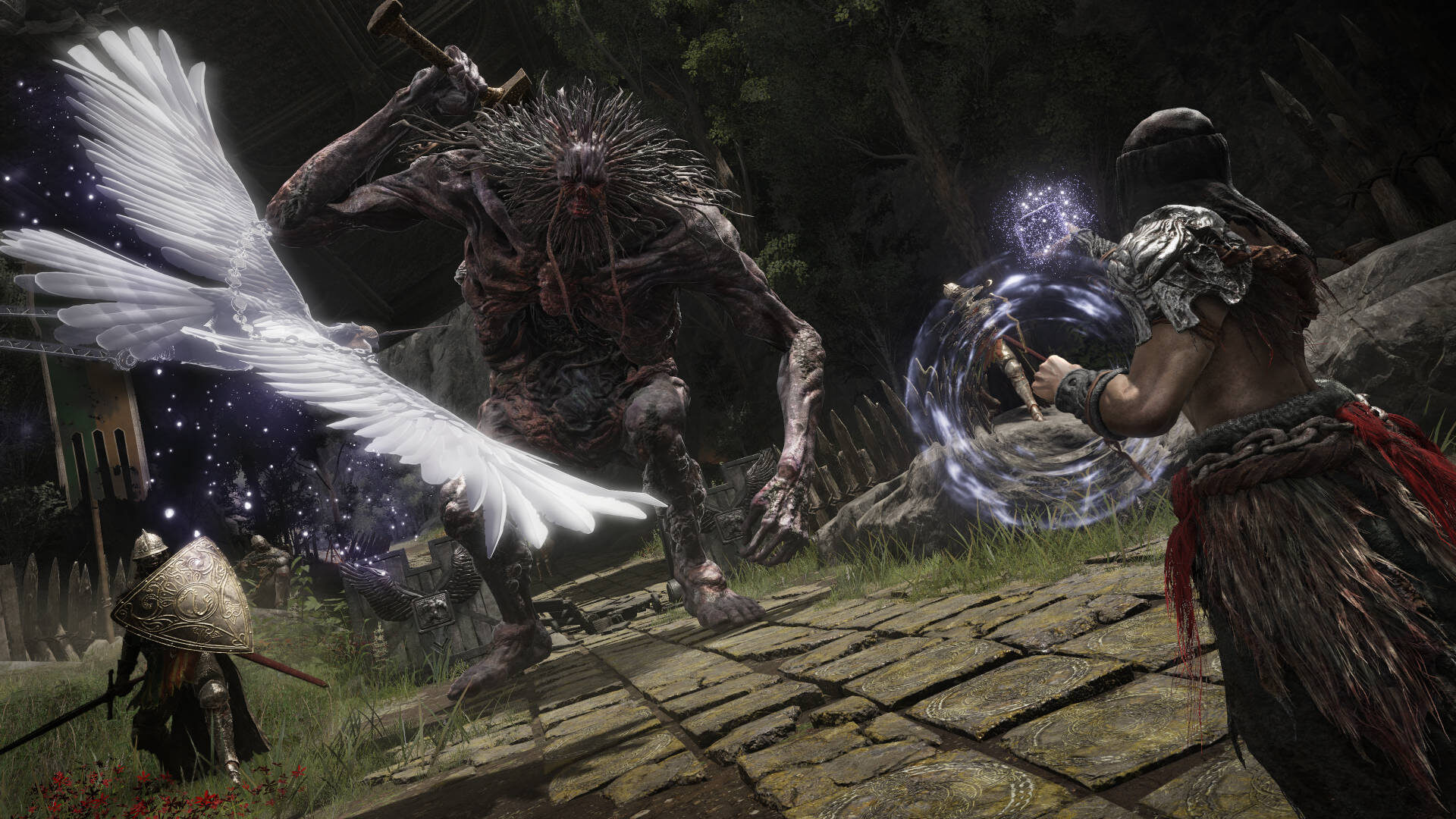
Much more than feeling like I don’t have to beat Elden Ring to give it a proper review, however, is that I don’t want to beat it. Not yet, anyway. I want to be selfish, and give myself as much time as I need in order to finish it my way, instead of just rushing through to the end so I can allow myself to form a final opinion. More than anything else I’ve said in this review, I think that is the strongest argument I can make for how good I believe Elden Ring is. I’m the type to find most games too long, even if being “too long” means lasting 12 hours instead of 8 to 10. And yet, even at 100 hours in, I want to keep going. I want to see all I can see and do all I can do before I close the book on this playthrough.
That’s in large part to my final piece of praise for Elden Ring: its storytelling. George R.R. Martin supposedly helped craft the mythos that fuels the Lands Between. Maybe he did, maybe he didn’t—I can’t really tell. These feel like traditional FromSoftware characters and stories to me. Unlike in so many other games, where I’m forced to play the good guy because I don’t have the stomach for being bad when lines are more clearly drawn, I adore the moral ambiguity of the Souls series. Everyone is a scheming asshole. Every action you take is the wrong one. If every path will lead to chaos anyhow, then I don’t have to feel bad about choosing the one I truly want to walk. And, unlike the fencesitting I’ve often done in the Souls games, here in Elden Ring, I’m all in on a scheme of my own. I’ve formed bonds with a small group of co-conspirators. We’ve set the wheels in motion. I’m probably going to still need another 20 to 30 hours in order to both beat the game and do all of the required side content necessary to make happen what I’m hoping is going to happen. If I beat the game now, I won’t get the chance to see things through to the end my way.
For now, I can’t tell you about which ending I got, or what strategy I used against the end boss, or what level my character was at once those credits finally rolled. What I can tell you is that, even with its flaws, Elden Ring is the most impressive, exhilarating, and engrossing adventure Miyazaki and his team have ever given us, and it shows just how much life the Souls series still has left in it. When I ended this review the first time, I expected that Elden Ring would most likely show up on my top five list for this year. Now, I’m left wondering if it isn’t going to end up as one of my favorite games of all time.
And God help me if, come December, I find myself having to argue why it should take the top spot over Starfield.
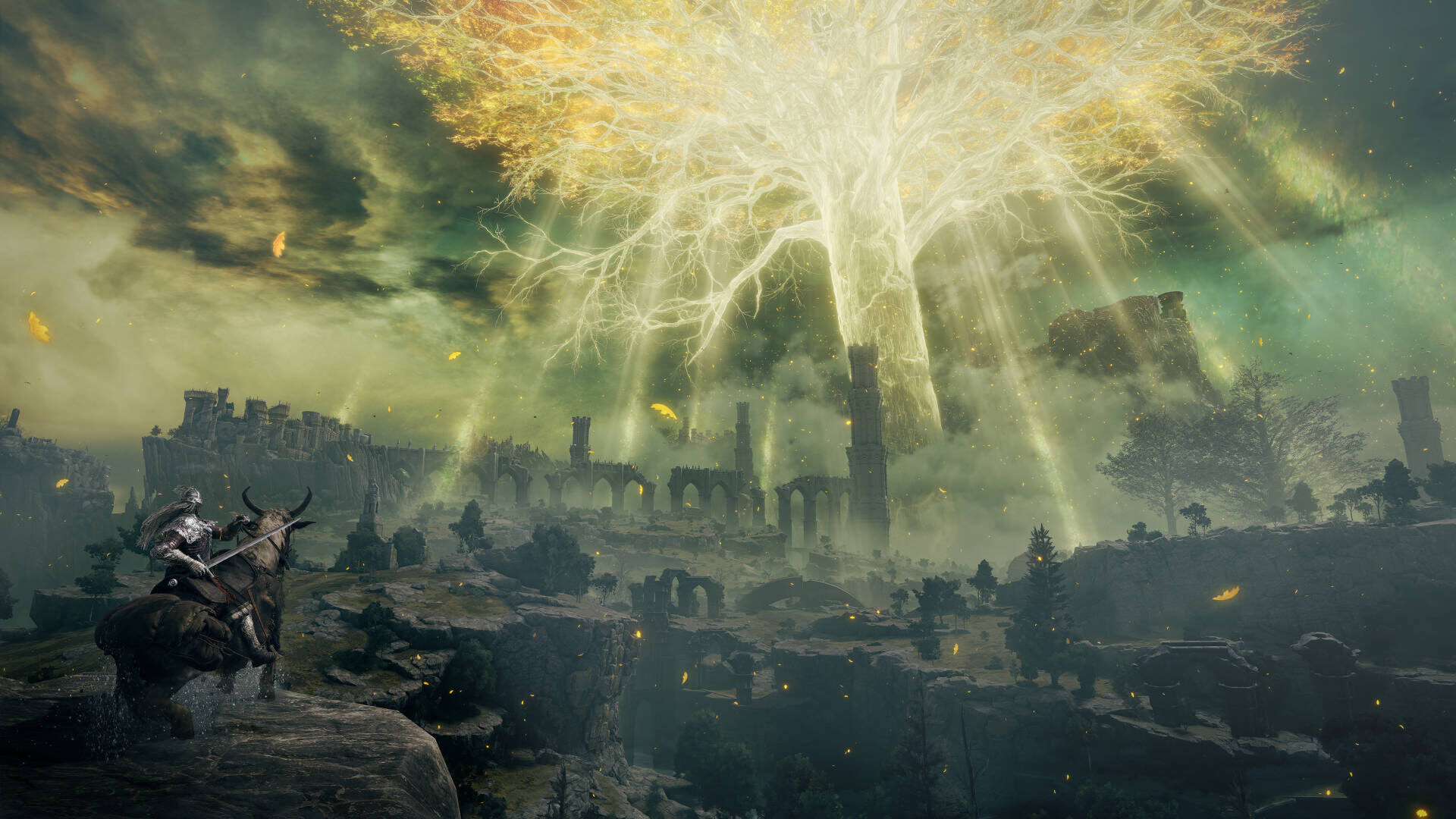
|
★★★★★
From its humble beginnings as a weird, brutally difficult new project that even its publisher had little faith in, the Souls series has grown into a vessel through which FromSoftware has helped change how we look at, and play, video games. And now, Elden Ring does the same for the Souls series itself. Years of gameplay refinements and revisions blend together with major franchise shifts such as the move to an open world and giving players far more freedom in how they set about saving said world. The result is a title that goes beyond anything Hidetaka Miyazaki and his team have given us before, both as a game and as an experience. |
Developer FromSoftware Publisher Bandai Namco ESRB M - Mature Release Date 02.25.2022 |
| Elden Ring is available on Xbox Series X/S, PlayStation 5, Xbox One, PlayStation 4, PC. Primary version played was for Xbox Series X/S. Product was provided by Bandai Namco for the benefit of this coverage. EGM reviews on a scale of one to five stars. | |

Mollie got her start in games media via the crazy world of gaming fanzines, and now works at EGM with the goal of covering all of the weird Japanese and niche releases that nobody else on staff cares about. She’s active in the gaming community on a personal level, and an outspoken voice on topics such as equality in gaming, consumer rights, and good UI. Check her out on Bluesky and Mastodon.